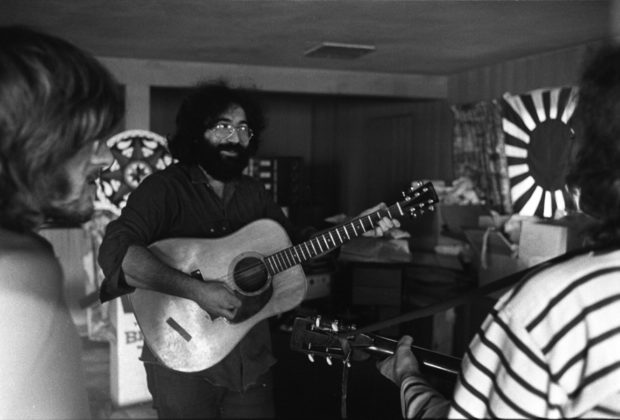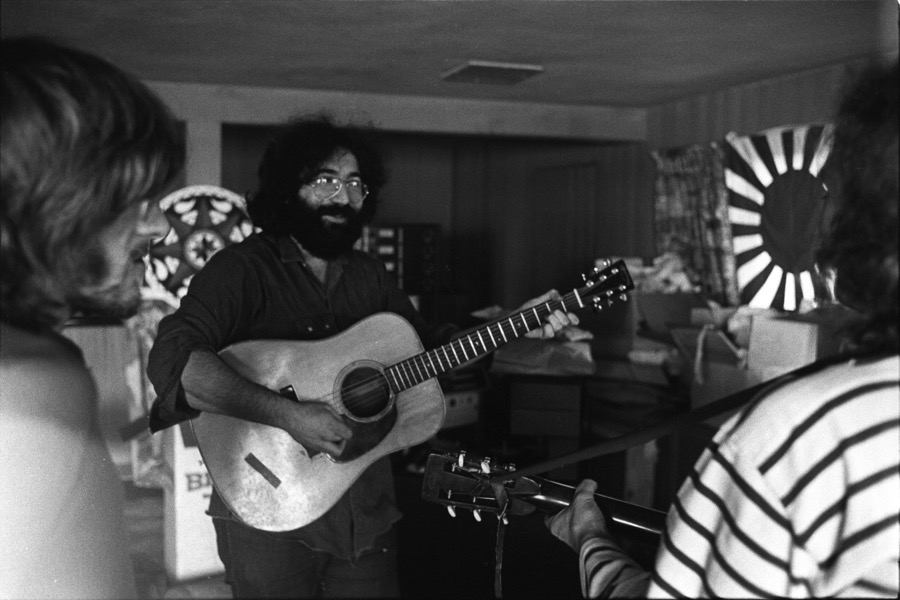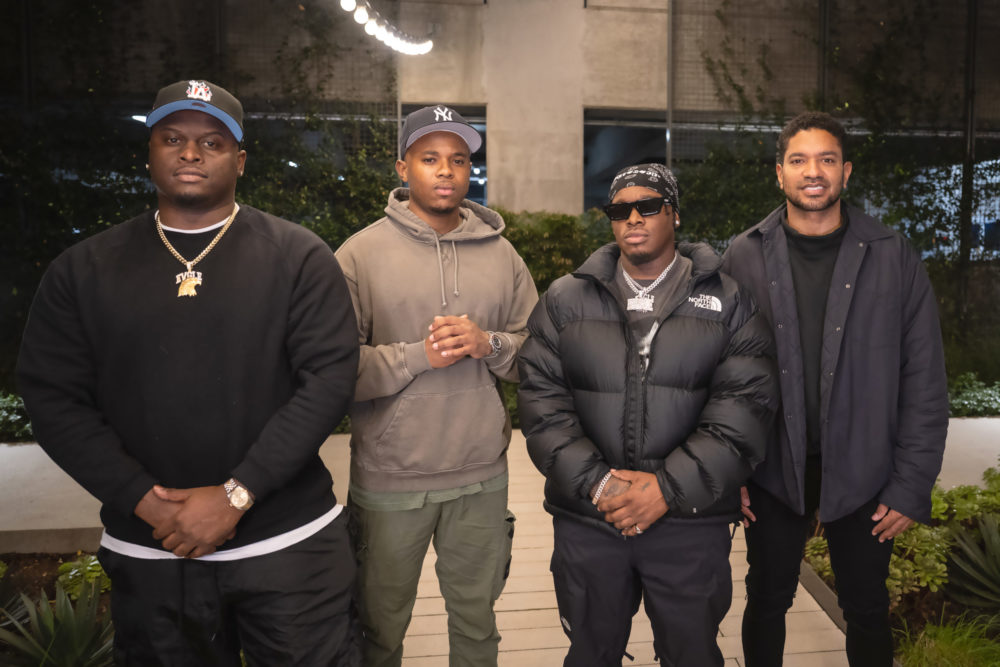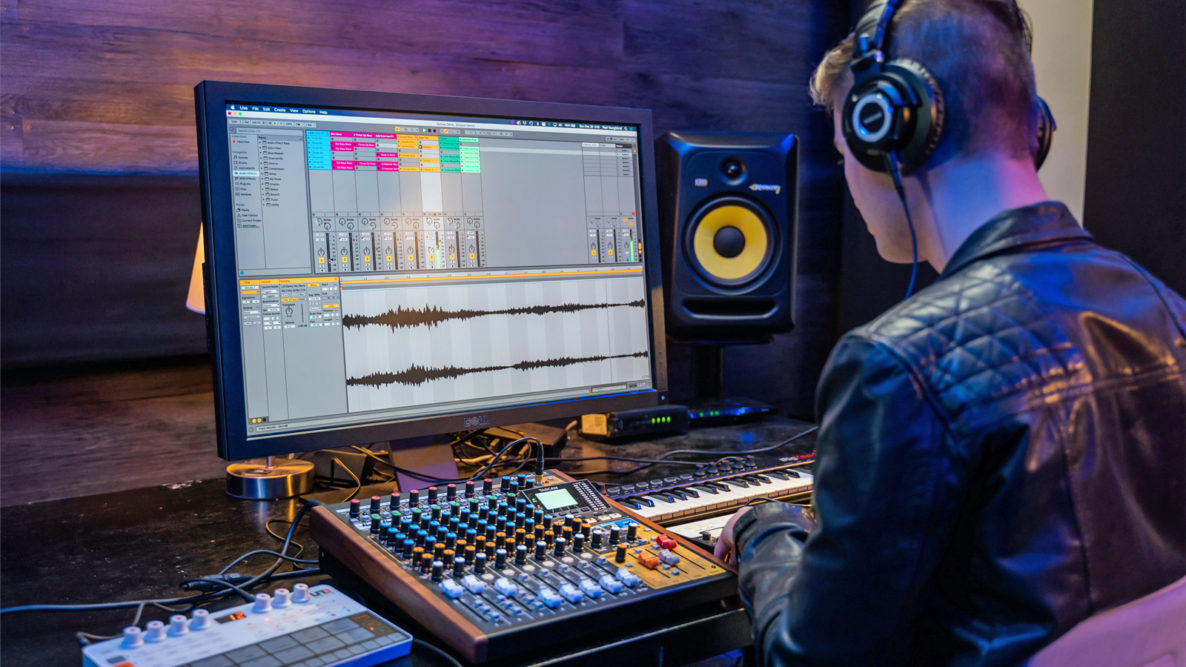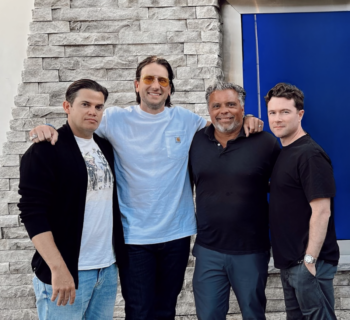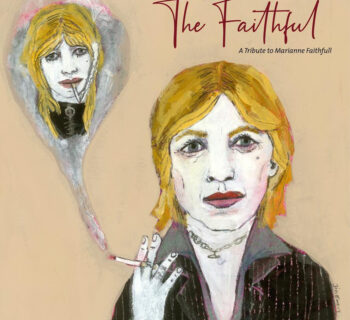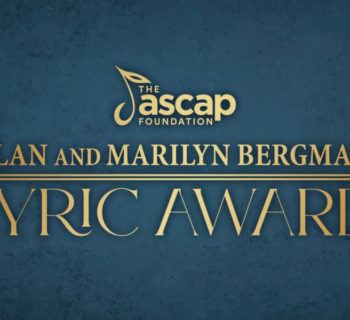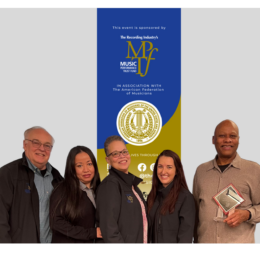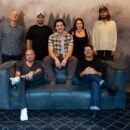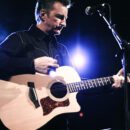According to Deadline, filmmaker Martin Scorsese is slated to direct and produce a biopic about the Grateful Dead’s Jerry Garcia, starring Jonah Hill—also attached as a producer.
“Writing the film are Scott Alexander and Larry Karaszewski, a longtime writing duo who also wrote Ed Wood and The People vs. Larry Flynt. Other producers of the film include Grateful Dead founding members Phil Lesh, Bob Weir and Bill Kreutzmann, drummer Mickey Hart, and Garcia’s daughter Trixie Garcia.
“Thanks to this cooperation between the band and production, Apple/Scorsese will be able to use the Dead’s entire music catalogue in the movie.
“Though there’s no word yet on what exactly the film will include, it’s impossible to deny that the band has a very rich history, and any part of it would make for a fascinating film. From their role in the counterculture of the 1960s to their iconic appearance at Woodstock, the band has no shortage of great stories. It’s also fitting for Apple, which has been building up its library of originals with music documentaries—and Scorsese’s next film, Killers of the Flower Moon.”
In 2017 Scorsese produced the Grateful Dead documentary Long Strange Trip.
Scorsese has a longtime history with the Grateful Dead.
In an interview I conducted with TV and film director/producer and writer Allan Arkush for my 2020 book Docs That Rock, Music That Matters, Allan explained the relationship he and Scorsese had for rock ‘n’ roll bands that dated back to 1968 when Scorsese was his teacher and faculty adviser at NYU.
“On the first day the head of the film school sat down and played us a couple of student films. The best one was It’s Only You Murray. The filmmaker was Martin Scorsese who eventually became my teacher at NYU. Marty had in 1968 an American film history class, based on the auteur theory. There were only about six film schools in the country and the one textbook was Andrew Sarris’ American Film. Then Marty was my production teacher. I was so lucky. Not just because it’s Marty, but to have the same person teaching me film history and production.
“Marty knew I worked at the Fillmore East and I would always tell him who was coming. And he would ask for tickets and I thought he was amazing and just having him as my teacher. I had not seen Who’s that Knocking? I would get him the same seats, fourth row, slightly on the left for him, Jay Cocks and two of their dates for different groups. Marty wanted to see Spooky Tooth. He wanted tickets for the Who, Grateful Dead but the group that he wanted tickets for than anything else, and he asked me almost every day about it was The Band. How was that for a fucking connection?
“On the night of the shows I’d come out and say hello. I certainly said hello on the night The Band played because there was no light show and I was on the stage crew. But I knew his connection to all this.
“In fact on Thanksgiving of 1969, after Woodstock, he came down to the theater with [director] Michael Wadleigh and a whole bunch of other people and they did picture and sound system and ran us a couple of rough cut scenes which was being edited to get the reaction of the real rock ‘n’ roll people. [Scorsese edited Sha Na Na, Sly & the Family Stone and Santana].
“So we had Thanksgiving dinner, saw those clips. I remember seeing Ritchie Havens, Canned Heat and some other people. To end the evening we all went up to Madison Square Garden to see the Rolling Stones. Jimi Hendrix and Janis Joplin are sitting behind the amps. On that show Terry Reid opened, B.B. King and the most awesome performance ever by Ike & Tina Turner and the Stones set that had ‘Gimme Shelter.’ How’s that for a good day?”
In related news, co-producers Jerry Garcia Music Arts LLC with Malcolm Leo and Dean Loring Gelfand of Malcolm Leo Productions are slated to release an immersive film experience focusing on the creative aspects of Jerry Garcia’s journey.
Jerry Garcia, Artist is a documentary based on an interview Malcolm Leo conducted and directed in 1987 filmed at Front Street Studio in San Rafael, California, by the Academy Award-winning cinematographer Russell Carpenter.
Garcia speaks directly to his audience about his music and art. Garcia's family is involved in the venture and co-producing the documentary. They’ve supplied visual art and music to the project. The documentary will have a charitable component that will benefit the Jerry Garcia Foundation and a charity chosen by the co-producer.
In 2003 I interviewed author, Grateful Dead historian and publicist Denny McNally who had just written and assembled Grateful Dead: The Illustrated Trip for DK Publishing.
We discussed the growing media profile of the Grateful Dead and the fixation on Jerry Garcia.
I suggested that most of the books written on or about the Grateful Dead primarily focus on Jerry Garcia. Why did he emerge, even before his death, as the focal point of books about the band? At least Illustrated Trip book goes a long way of distributing the action to everyone else.
“And, yes it does do that, and it isn’t Jerry specific,” explained Dennis. “But the fact is that Jerry got more attention for the simple reason that he probably had one of the best raps. He liked talking. He enjoyed conversation. Most musicians when they do an interview they have purpose, they’re selling something, they’ve got something in mind or they will try out a dialogue. Jerry would get into an interview and it would become a conversation. He would be curious what the other person’s life was like.
“Well, I have a Ph.D in history. My obligation as a historian is to tell the story completely. And those folks and their contributions need to be remembered, especially for Deadheads, who for instance, are- post ‘Touch Of Grey.’ At any rate, for Jerry it was never really the Grateful Dead after Pig Pen died, ya know.”
I mentioned Dennis’ book further cemented the bond the Grateful Dead has always had with their audience. It’s formed by the band members and their fans together.
“Absolutely,” reinforced McNally. “It’s the relationship between those two. It’s so tightly bound that it is like a force field. That is what the Grateful Dead is all about.”
During 1976 I conducted an interview for the now-defunct Melody Maker with Jerry Garcia at music promoter Bill Graham’s house in Mill Valley, California.
When I encountered Garcia I wasn’t a big Grateful Dead fan or collector. I had seen them a handful of times in the early and mid- ‘70s. I enjoyed Jerry Garcia’s solo shows, especially a 1973 Ash Grove club date in Los Angeles.
I was just fascinated by Jerry Garcia. He was so accessible. And, he was also interested in me. Who I dug, which books I had read, the kind of music I collected. I only had a few Grateful Dead albums, and told him. I wasn’t a concert taper and didn’t swap cassettes of their gigs. Jerry grooved on my honesty.
I did compliment him on his pedal steel playing and work on Jefferson Airplane’s Surrealistic Pillow LP. We sat around and Jerry pulled out some very potent marijuana he had concealed in a container of nose spray when he tore open the lid on the spot. I had never seen that before…
I asked Garcia about Woodstock music festival.
“It started the mega-success. That was a total disaster from our point of view. We played probably the worst set of our career. I’d like that one erased from the books.
“Well, I can get into that real easy. The worst for us and for me personally was Woodstock. The ultimate calamity. First of all, we were really stupid in the way we dealt with it. It was raining and we went on just after it got dark. There was maximum confusion going on, sound logistics. Really weird. Plus I was high, of course. And I went on stage in a state of confusion.
“Huge crowds of people over the stage,” beamed Garcia. “The stage had sheet metal and stuff on it, it’s wet, and I’m getting incredible shocks from my guitar. Pretty soon I started hallucinating a ball of electricity rolling across the stage jumping off my guitar. Meanwhile all the little citizen band radios and walkie talkies and things with the amplifiers –– there’s weird voices coming out of the amplifiers. It’s dark, and you don’t see any audience, but you know there’s 400,000 people out there. Then somebody leans over across the stage, since everyone is ganged up, and says the stage is about to collapse. I’m standing there in the middle of this trying to play music. Then they turn on the lights, and the lights are a mile away. Monster super troopers. Totally blinding and you can’t see anything at all. Here’s this energy and everything is horribly out of tune, ‘cause it’s all wet, damp and humid. It was just a disaster. It was humbling (laughs)."
“I really think the scene out here created the possibility for Woodstock to happen. Earlier the Monterey International Pop Festival. The thing, the activity, music, and people. The set-up was out here.”
“I think that the world has changed. I think the United States has changed very visibly in the last ten years. A lot of it had to do with what happened in San Francisco. I can’t say how or why, but I also think it’s affected everything. Just all the interest in things like ecology. All the interest in the sense of personal freedom as expressed by all kinds of movements. All these things were designed to free the human. Social overtones. All that stuff. The communal spirit.”
“When the Acid Tests were happening, I personally felt ‘In three months from now the whole world will be involved in this.’ So, as far as I’m concerned, it’s been slow and disappointing. Why isn’t this paradise already? (laughs). My personal feeling has been one of waiting around.”
We chatted about the San Francisco music scene.
“We’re serious. One of the things you could say about all the bands that came from San Francisco at that period of time was that none of them were very much alike. I think each of us has dealt with it in various ways. For me, I know what I’m supposed to do, and I’ll do what I’ll have to do to be able to play. I think almost all the people I’ve known around this area, involved around the music scene, have been faithful to that thing. They’re all kinds of things happening, but it really has to do with what you are into. Right now, the San Francisco music scene is deeper than it ever was, in the sense of any night you can go to 14 or 15 places in the Bay Area in a radius of 50 miles and see something really good. Not only that a lot of different kinds of music.”
We discussed the Grateful Dead recordings and solo efforts of group members.
“Everybody knows who they are. No matter what you read about you in the paper, you know who you are. You don’t get any special breaks at the gas station. You can either be sucked in by that stuff, in which case it just eats you, or else just realize there’s a difference between what you read and who you are. I always did. It works beneficially. Doing things with other people, you can appreciate the uniqueness of each situation a little better.
“I like the live experience. That’s where it counts. That’s when music is real. It’s real in that situation. That’s the situation that I feel I have the greatest sense of personal responsibility about. I don’t mind putting out a bad record, but I really hate a bad concert. That really is depressing.”
“It’s not judgmental. You can’t deal with it in a yes/no kind of fashion. For example, my band is a band that could best be described as consonance and harmony. Conceptually, everybody in the band thinks pretty similarity. In the Grateful dead it’s a situation in which almost no two people have the same conception musically; which makes it harder. Nobody gets their way. However, what we all respect about that situation is that there is a potential of a larger central viewpoint which none of us, individually, are capable of perceiving, but which we all add to because of the diversity and the conflict.”
Jerry also reflected on life on the road.
“I’ve learned that it requires a certain discipline for me personally. And I know I’ll approach it in a certain way. I’ll definitely burn out, and I wouldn’t survive a tour, for example. For me, it’s a matter of surviving. This is the set of givens. You’re gonna be in airports, motels, exposed to any number of strange drugs, strange experiences, intensity of this sort, and so forth.
“Within that framework how do you stay even? What you do is learn so it becomes a thing of pace, vitamin C, protein. You try and stay alive. That’s a fundamental problem. I’m just the sort of person who deals with things on that level. Once I know things what I have to cope with, it’s just a matter of adjustment. I just hate personal failure, being on stage and going through the changes and playing bad because I’m either not well, tired, too stoned, whatever. To me it’s an aversion therapy thing. It’s the reason I’ve been able to survive.”
Harvey Kubernik is the author of 20 books, including Leonard Cohen: Everybody Knows, Canyon Of Dreams: The Magic And The Music Of Laurel Canyon and Turn Up The Radio! Rock, Pop and Roll In Los Angeles 1956-1972.
Otherworld Cottage Industries in August 2020 published Harvey’s book, Docs That Rock, Music That Matters. Kubernik’s writings are in several book anthologies, including The Rolling Stone Book Of The Beats and Drinking With Bukowski.
Sterling/Barnes and Noble in 2018 published Harvey and Kenneth Kubernik’s The Story Of The Band: From Big Pink To The Last Waltz. For November 2021 the duo penned Jimi Hendrix: Voodoo Child for the publisher.
Kubernik wrote the liner note booklets to CD re-releases of Carole King’s Tapestry, Allen Ginsberg’s Kaddish, Elvis Presley The ’68 Comeback Special, the Ramones’ End of the Century and a vinyl release for National Record Store Day Black Friday November 26, 2021 of the never issued Big Brother and the Holding Company (featuring Janis Joplin) Combination of the Two Live at the Monterey International Pop Festival). During 2020 Harvey Kubernik served as a Consultant on the 2-part documentary Laurel Canyon: A Place in Time directed by Alison Ellwood.

